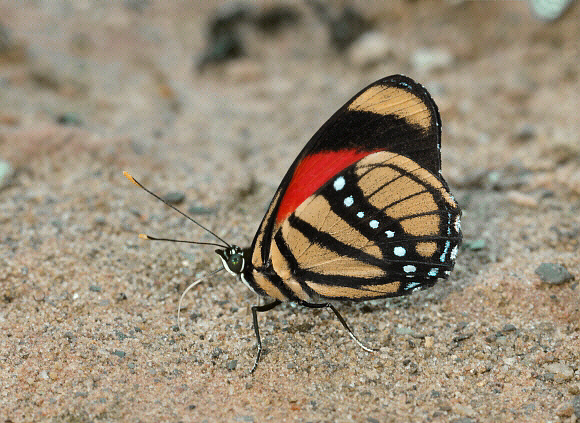 Callicore felderi cajetani, Tingo Maria, Peru – Adrian Hoskins
Callicore felderi cajetani, Tingo Maria, Peru – Adrian Hoskins
Introduction
There are 20 known species in the genus Callicore, all of which bear distinctive and graphic patterns on the underside hindwings, often resembling numbers or letters of the alphabet. A few have more abstract patterns such as the row of 8 spots found on felderi. The uppersides of all Callicore species are black, marked on the forewings with bright red or orange bands. The hindwings are black, and in some species have red or orange markings. Callicore felderi had a blue sheen on the hindwings.
egg-laying potentialThe easily caught mud-puddling males of many Callicore species are killed in vast numbers for their wings which are used by the souvenir trade for the production of decorated plates, jewellery, place mats and other trivia. Although this practice is abhorrent to naturalists it probably has little effect on population dynamics, as the males will have already mated and passed on their genes. Females are more difficult to capture, so are usually able to fulfil their egg-laying potential.
Callicore felderi is endemic to Peru. The Upper Amazonian subspecies felderi has an orange band on the forewing, while the Andean subspecies cajetani has a red band.
Habitats
This species inhabits lowland rainforest and Andean foothills at altitudes between about 200-1500m.
Lifecycle
I have no information specific to felderi. In most Callicore species the eggs are white, and are laid singly on Serjania, Allophylus or other Sapindaceae.
Adult behaviour
The butterflies have a rapid and powerful flight over short distances. They are usually encountered as solitary males, visiting river beaches where they imbibe dissolved minerals from urine-soaked ground. In hot sunny weather they commonly settle on the hands, limbs and faces of humans to imbibe sweat.
